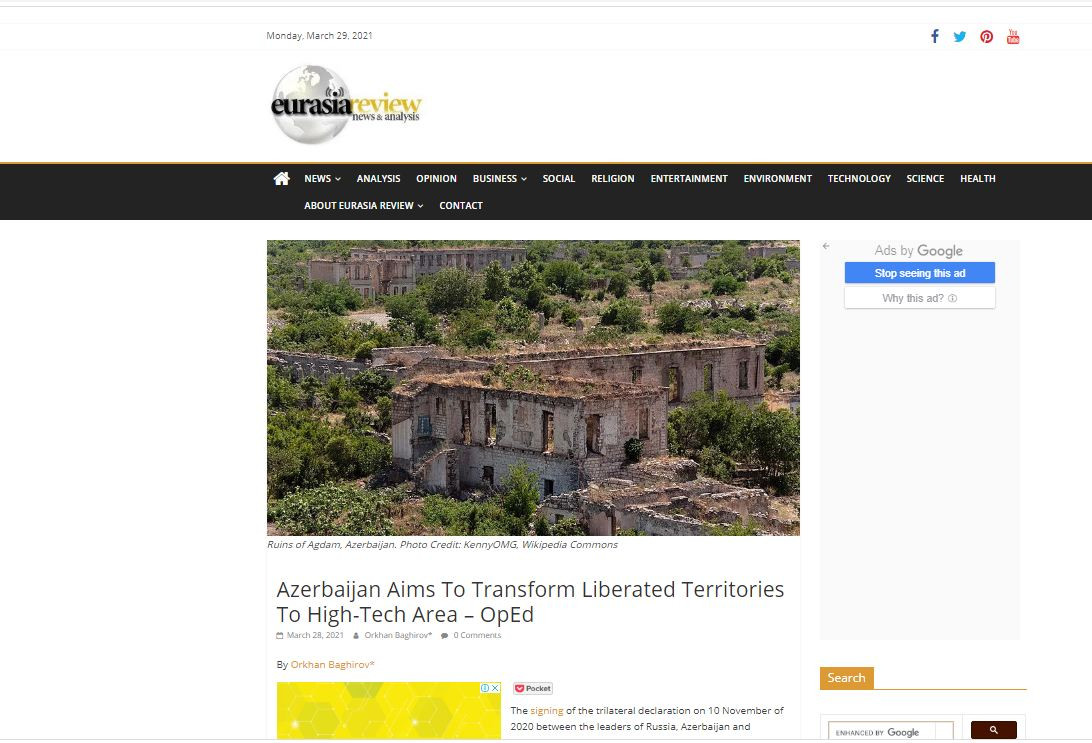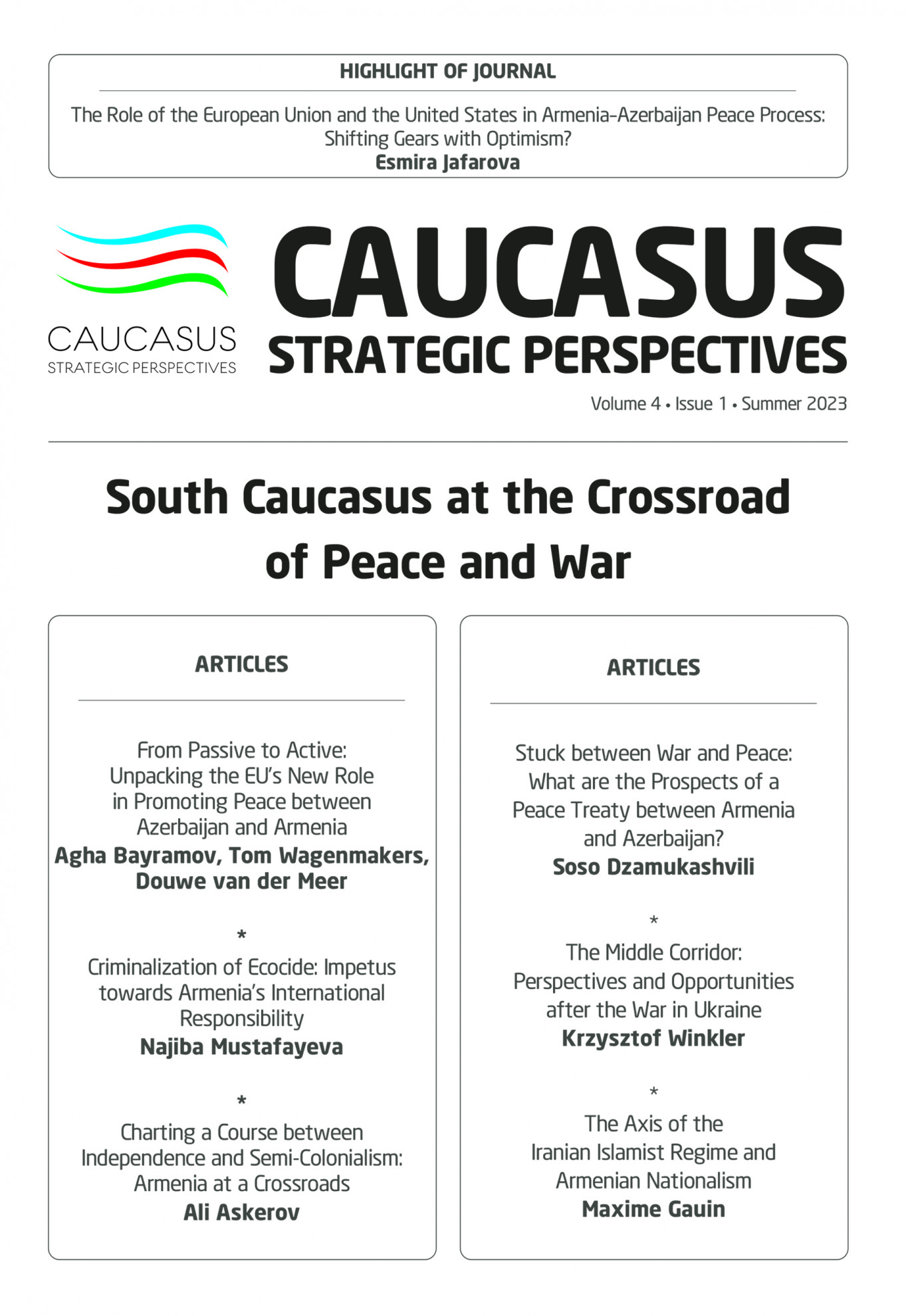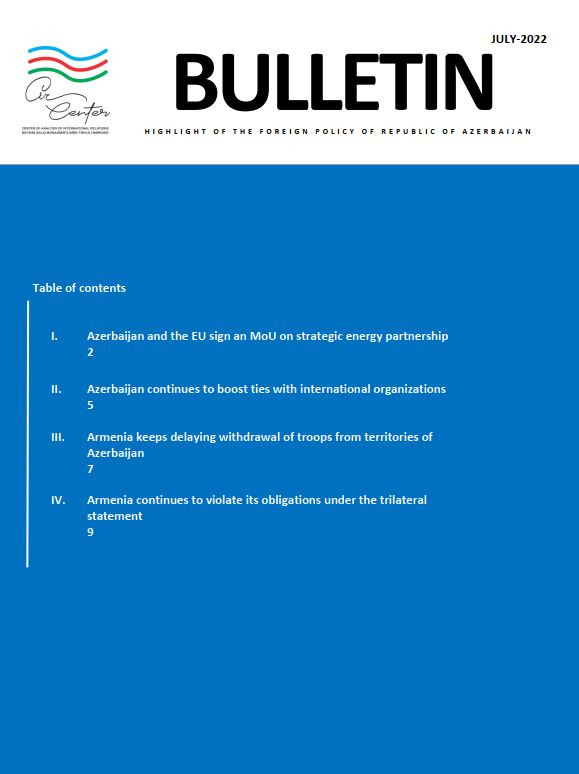The signing of the trilateral declaration on 10 November of 2020 between the leaders of Russia, Azerbaijan and Armenia ended “The Second Karabakh War”, which led to the restoration of the territorial integrity of Azerbaijan. Nearly 30 years of occupation have caused great destruction in the previously occupied territories and occupiers have almost completely destroyed the existing infrastructure in most of the cities and villages. The Agdam city, which faced the most severe destruction, was even described as the “Hiroshima of the Caucasus.” According to the estimates of the UN, the total economic damage of the occupation was around $53.5 billion. According to the Military Prosecutor’s Office of Azerbaijan, if we take into account all the material and environmental degradation, the total damage that Azerbaijan is faced with is about $819 billion.
As the occupation has ended, Azerbaijan now aims to fully recover the liberated territories. Despite the fact that the scale of the devastation makes the economic recovery process complex and time-consuming, Azerbaijan wants to transform the liberated territories into areas of high-tech development. Thus, immediately after the war, the plan for socio-economic development of the liberated territories was prepared and the reconstruction process has started. For the efficient organization of the recovery process “Coordination Headquarters” and 17 working groups on different areas were established. Initially, $2.2 billion is planned to be allocated in the 2021 budget for the restoration process. These funds will be used for the formation of infrastructure and ensuring the availability of utilities. At the next stage, priority will be given to private and foreign investments.
The first steps taken in the restoration process were the construction of roads and highways. The first transport project, which was launched during the war was the reconstruction of roads connecting Tartar city with Sugovushan and Talish villages in the North-East direction of Karabakh. The total length of highways is 28.5 km and the first stage of reconstruction of these highways has already been completed. At the next stage, it is also planned to restore the roads from Naftalan City to the Talysh village with a length of 22 km.
The other important transport project is the Ahmadbeyli-Fuzuli-Shusha highway, which is 101.5 km in length and reduces the distance from the capital Baku to Shusha to about 363 km. Initially, $29.4 million were allocated for the construction and these highways are expected to be completed by late 2021 or 2022. The final part of this road which connects Fuzuli and Shusha has a symbolic meaning for Azerbaijan as the road passes from the territory that was used by the Azerbaijani soldiers to liberate Shusha city, the cultural center of Azerbaijan. Therefore, President Ilham Aliyev named it “The Road to Victory.”
Along with the Ahmadbeyli-Fuzuli-Shusha highway in the southern part of Karabakh, Azerbaijan plans to construct the Horadiz-Zangilan-Qubadli-Lachin road. It is also planned to connect Horadiz with Fuzuli and Shusa by railway. Currently, this project is in its planning stage and the construction of this railway is expected to start in 2021. Other railway projects include the Barda-Aghdam railroad which is part of the Yevlakh-Khankendi railway (104 km). The construction of a 45-kilometer section from Barda to Agdam has already started and initially, $2.94 million has been allocated. The Horadiz-Agband railway will also be restored. This road is one of the main components of the Zangazur corridor.
In the northern part of Karabakh, Azerbaijan works on the Toganalı-Kalbacar highway project. With an approximate length of 190 km, this highway will get through the Murovdag mountain range and will be extended to the Istisu resort area. At some points, the altitude of the highway will reach 3500 meters. Therefore, it is planned to build several tunnels with a total length of 10-12 km in order to avoid possible transportation difficulties in the winter. This highway will be also extended to the Lachin district. All the mentioned transport projects will create the necessary infrastructure to reach Kalbajar and Lachin regions both from northern and southern directions.
Along with highways and railways, the Azerbaijani government also plans to build three airports in the liberated territories. The first airport project is the Fuzuli International Airport, the foundation of which was laid on January 14. The runway of the airport is 2,800 meters long and it is going to be commissioned this year. The new airport will facilitate the travel of foreign visitors and tourists to the liberated territories, especially to Shusha. Fuzuli-Shusha highway will be connected to the Fuzuli airport, which will make it easier for foreign visitors to travel to Shusha. It is also planned to build other airports in Lachin and Zangilan districts.
One of the main goals of Azerbaijan in the restoration process is to provide energy security to the liberated territories and create a “Green Energy Zone”. Thus, priority will be given to the use of renewable energy sources. It is estimated that liberated territories have more than 4,000 Mw of solar and up to 500 Mw of wind energy potential. The process of establishing a green energy zone has already started and the Energy Ministry of Azerbaijan had meetings with international financial institutions. At the meetings, the organization of renewable energy auctions and the possibility of attracting private investments were discussed.
Along with discussions of green energy projects, other energy projects have already started. Currently, two power lines are being laid to Shusha. The “Azerishiq in Karabakh” project is being implemented to provide electricity to government buildings. Works are also underway for the restoration of hydroelectric power plants (HPP) that were destroyed by the Armenian occupants. The 8-megawatt Gulabird HPP in Lachin region has already been put into operation. Restoration and reconstruction of two HPPs in Sugovushan, Khudaferin and Qiz Qalasi HPPs in Jabrayil and Shukurbayli HPP in Fuzuli are also underway. Also, SOCAR is planning to construct gas pipelines with a total length of 416-kilometer in liberated territories.
The technology-based approach will also be used in the urban planning. The cities and villages in the liberated territories will be re-established based on the “smart city” and “smart village” concepts. This will allow the application of the world’s most advanced technologies in the liberated territories. The establishment of “smart cities” will create effective municipality-to-resident interaction, high quality of government services and citizen welfare. The first smart village will be established in the Agali village of the Zangilan region. It is planned to build 200 houses in the village and the energy supply of the village will be provided by only alternative energy sources.
All these restoration projects manifest that Azerbaijan is going to transform the liberated territories into one of the most developed areas in the region. Establishing a green energy zone and smart villages will create substantial opportunities for sustainable economic development. Restoration of transport connections and establishment of airports in the liberated territories will boost trade relations and will create a favorable environment for the full usage of tourism opportunities. As a result, Azerbaijan will be able to use lost opportunities and resources and bring the share of liberated territories in the economy to pre-occupation levels. Economic development in turn will contribute to the maintenance of sustainable peace and open prospects for future reconciliation between Armenia and Azerbaijan, provided for the full implementation of 10 November agreement, including the full withdrawal of Armenian troops from Azerbaijani territories.








